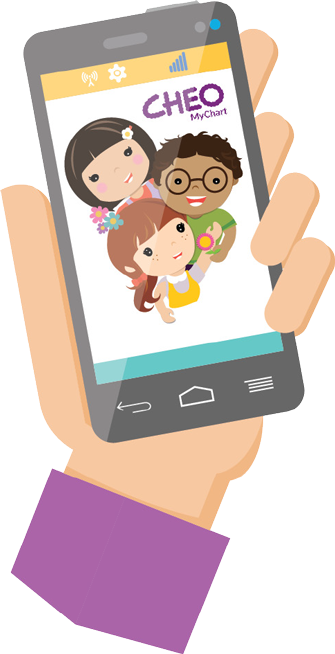
For best results make sure background graphics are enabled.
| Table of contents |
|
Who qualifies for sedation at CHEO? What happens during the procedure? |
Children and youth sometimes need sedation for a stressful or painful test or procedure, like getting stitches. Sedation means your child will be given medication to help make them drowsy. It is used in situations when general anesthesia (putting your child to sleep) isn't necessary. After receiving sedation, your child may look like they are sleepy, and aren't aware of their surroundings.
When is sedation given at CHEO?
Some of the reasons your child may receive sedation during their visit to CHEO include:
- being seen in the Emergency Department and needing to have a test or a procedure like stitches
- visiting one of our clinics and needing to have a stressful procedure
Getting ready for sedation
Your child's medical team will meet with you to discuss the sedation process. To prepare for sedation, your child's medical team will:
- assess any medical problems, allergies and past anesthetics or sedations
- explain the procedure
- review any risks and possible side effects
Fasting
Children and youth must have an empty stomach before scheduled sedation. Your child’s medical team will discuss any required fasting procedures with you.
What happens during the procedure?
We will check and record your child's heart rate, blood pressure, breathing and oxygen level during their procedure. Your child will be monitored by your health care team until they are back to normal.
Types of sedation medication
The medication your child will receive will depend on the test or procedure they are having done. Some common types of sedation medications are:
- Midazolam - makes patients sleepy and forget what happened
- Lorazepam - makes patients sleepy and forget what happened
- Nitrous oxide - makes patients sleepy and relaxed
- Ketamine - provides pain relief, makes patients sleepy and forget what happened
- Propofol - strong sedative wears off quickly
- Fentanyl - provides pain relief
Caring for your child after sedation
When children and youth wake up from sedation they may:
- be confused
- have blurry vision
- be agitated and upset — this will get better quickly
- throw up — if vomiting continues, we may give some medications to help
Going home
Your child is ready to go home when they are awake and able to drink. This recovery time is usually 1-4 hours, depending on what type of medication they have. Monitor your child closely for the first 24 hours.
Teens should not drive any motorized vehicle for 24 hours after receiving sedation.
Diet
Your child or youth can return to their normal diet as soon as they feel ready. If they feel nauseous, try giving clear fluids like ginger ale. Start with clear fluids like ginger ale. water, apple juice or popsicles. If there is no vomiting, you can try light foods like soup. toast. or cereal.
Activity
Your child or youth can go back to regular activities after 24 hours.
Effects of sedation
After sedation, your child may be a little grumpy, tearful or get upset easily.
Come to the Emergency Department if your child has:
- trouble breathing
- difficulty waking up
- a change in skin colour (very pale or blue)
- repeated episodes of vomiting
Questions?
Contact your child's primary health care provider, or their clinic at CHEO.
Have you registered for MyChart?
MyChart is a FREE secure, online patient portal that connects patients to parts of their CHEO electronic health record, anywhere, at any time.
To apply for MyChart access, visit cheo.on.ca/mychart and fill out the MyChart access request form. Once your application has been approved, we'll send you an email with an activation code and instructions on how to log in and get started.





